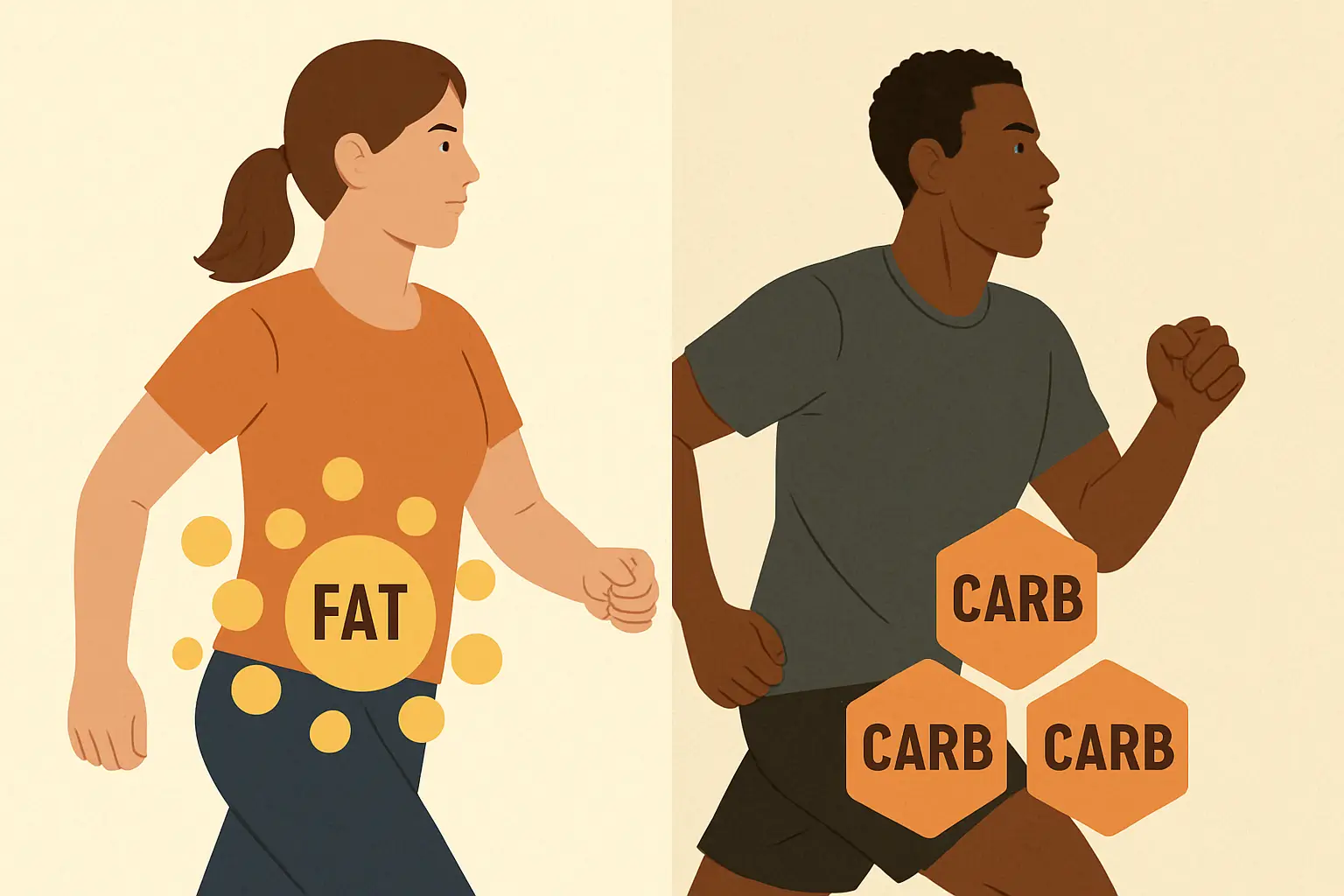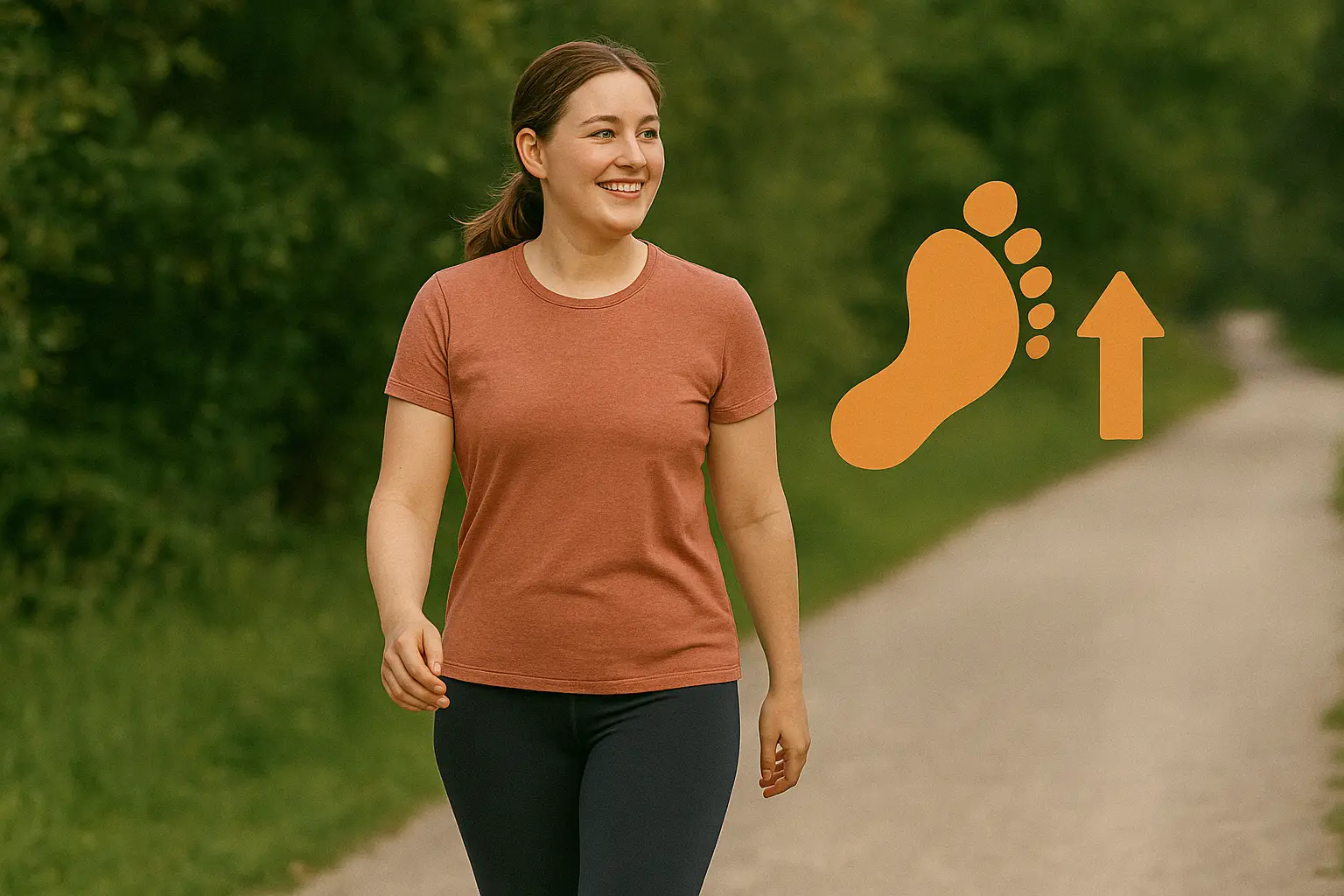Walking vs. Running: Which One Burns More Fat?
Published On : 8th Oct 2025

If you’re trying to shed extra kilos, you’ve probably wondered — is walking enough, or should I start running? Both are excellent forms of cardiovascular exercise that can help with weight management and overall fitness. However, the difference lies in how each activity impacts fat burning, metabolism, and long-term results.
In this guide, we’ll break down the key differences between walking and running, explore which one burns more fat, and help you decide which fits best into your lifestyle and fitness goals.
Understanding How Fat Burning Works
To understand whether walking or running is better, it’s important to know how fat burning actually works.
Your body uses different energy sources depending on the intensity of your workout:

- At low to moderate intensity (like brisk walking), your body primarily uses fat as the main source of fuel.
- At high intensity (like running), it uses carbohydrates more, because they’re quicker to convert into energy.
But here’s the catch — while running uses more carbs during the workout, it burns more total calories overall, which can lead to more fat loss over time if combined with a healthy diet.
Calorie Burn Comparison:
On average:
- A 70-kg person burns 100–120 calories per mile while running.
- The same person burns 60–80 calories per mile while walking.
So, running clearly burns more calories in less time. But that doesn’t mean walking is less effective — if you walk longer or more frequently, the total calorie burn can be just as significant.
Benefits of Running for Fat Loss
Running remains one of the most efficient exercises for losing weight fast.

Key Benefits:
- High Calorie Burn: Running helps you burn more calories per minute, making it ideal for those short on time.
- Afterburn Effect (EPOC): Your body continues to burn calories even after your run, enhancing fat loss.
- Improves Cardiovascular Health: It strengthens your heart, lungs, and endurance.
- Boosts Mood and Motivation: Running releases endorphins, reducing stress and improving mental health.
However, running is high-impact and may cause strain on joints or injuries if done excessively without proper recovery or technique.
Benefits of Walking for Fat Loss
Walking is often underestimated, but it’s a powerful tool for long-term fat loss and metabolic health.

Key Benefits:
- Gentle on Joints: Perfect for beginners or those recovering from injuries.
- Sustainable and Consistent: You can walk daily without risk of overtraining.
- Enhances Fat Metabolism: Longer, steady-state walks promote fat oxidation.
- Supports Mental Well-being: Walking outdoors reduces stress and improves focus.
- Complements Other Workouts: Ideal for recovery days or low-intensity fat-burning sessions.
Studies show that walking 8,000–10,000 steps a day can significantly improve metabolism and aid steady weight loss.
Walking vs. Running: Which One Burns More Fat?
While running burns more calories per minute, walking burns a higher percentage of fat calories during exercise.
So, which is better?
- Running is great for quick results and higher calorie burn.
- Walking is better for consistency, recovery, and long-term fat metabolism.
The ideal choice depends on your current fitness level, age, goals, and physical condition.
If you’re new to exercise or have joint issues — start with brisk walking. If you’re already active and want faster results, include regular runs or jogs in your weekly plan.
Combine Both for Maximum Fat Loss
The best approach is not to choose one — but combine both walking and running. Alternating between the two helps you burn more calories, improve endurance, and avoid plateaus.
Try This 30-Minute Fat-Burning Interval Plan:
- 5 minutes warm-up walk
- 1 minute running + 2 minutes brisk walking (repeat 6 times)
- 5 minutes cool-down walk
This mix keeps your metabolism elevated and fat-burning efficient throughout the day.
7-Day Walking and Running Plan for Fat Loss
This beginner-friendly weekly plan combines walking and running to maximize fat burn, improve stamina, and build consistency. You can adjust the intensity and duration based on your fitness level.
- Day 1 – Brisk Walking Warm-Up:
- 5 minutes easy-paced warm-up walk
- 40 minutes brisk walking
- 5 minutes cool-down
Tip: Focus on maintaining a steady pace and deep breathing.
- Day 2 – Run-Walk Intervals:
- 5 minutes warm-up walk
- Alternate 1 minute running + 2 minutes brisk walking (repeat 8–10 times)
- 5 minutes cool-down walk
Goal: Boost metabolism and build endurance.
- Day 3 – Long Walk:
- 60 minutes brisk walking
- Maintain a steady pace throughout
Tip: Try to walk outdoors or on varied terrain to challenge your muscles.
- Day 4 – Active Recovery:
- 30–45 minutes light walking or yoga/stretching
Purpose: Allow your muscles to recover and prevent fatigue.
- Day 5 – Tempo Run:
- 10 minutes brisk walk
- 20 minutes steady jog (moderate pace)
- 10 minutes cool-down walk
Goal: Improve cardiovascular capacity and calorie burn.
- Day 6 – Incline or Hill Walking:
- 5 minutes warm-up
- 40 minutes brisk walking uphill or on an inclined treadmill
- 5 minutes cool-down
Benefit: Strengthens your legs and increases fat-burning intensity.
- Day 7 – Rest or Light Activity:
- Take a rest day or do a light 30-minute walk
Tip: Listen to your body — rest is essential for recovery and progress.
Common Mistakes to Avoid
- Overestimating Calorie Burn: Remember, diet plays a major role in fat loss.
- Skipping Warm-Ups and Cool-Downs: These reduce injury risk and muscle strain.
- Wearing Improper Shoes: Choose supportive footwear for both activities.
- Ignoring Consistency: Walking or running occasionally won’t help — regularity matters.
Tips to Maximize Fat Burn
- Walk or run in the morning on an empty stomach for effective fat utilization.
- Include strength training twice a week to build muscle and boost metabolism.
- Track your steps, distance, and heart rate using a fitness tracker.
- Stay hydrated and maintain a balanced diet rich in protein and fiber.
Conclusion
Both walking and running are incredible tools for burning fat — what truly matters is consistency and enjoyment. If you enjoy your workout, you’re more likely to stick with it, which ensures long-term success.
So, whether you’re taking peaceful walks in the park or going for a refreshing morning run — you’re moving closer to your fitness goals with every step!
Frequently Asked Questions
Both can help you lose fat — it depends on your intensity and consistency. Running burns more calories in a shorter time, while walking burns more fat proportionally and is easier to sustain daily.
For effective fat loss, aim for at least 150 minutes of moderate activity (brisk walking) or 75 minutes of vigorous activity (running) per week. Combining both can accelerate results.
Yes! Regular brisk walking, combined with a calorie-controlled diet, helps reduce overall body fat, including belly fat. Try walking 8,000–10,000 steps a day for best results.
A 30-minute run burns nearly double the calories of a 30-minute walk. However, walking longer (like 60 minutes) can equal or even surpass that burn.
Absolutely! You can mix walking and running in one session — for example, run for 1 minute and walk for 2 minutes. This interval training helps boost metabolism and improves endurance.
Yes, if done regularly and with enough duration or intensity. Fast-paced walking uphill or on an incline treadmill can offer similar fat-burning benefits as light jogging.
Morning workouts may help boost fat burning on an empty stomach, while evening sessions can improve performance. Choose the time that fits your routine and keeps you consistent.
Warm up before starting, wear proper shoes, maintain good posture, and listen to your body. Avoid increasing your distance or pace too quickly.
Yes! Walking can safely be done daily. For running, it’s best to allow 1–2 rest days per week for recovery, especially if you’re doing high-intensity runs.
Consistency is the key — whether you walk or run. The activity you enjoy and can maintain regularly will deliver better long-term fat loss results.



